This British cavalry unit was raised in 1715 as Honeywood’s Regiment of Dragoons and continued in service through the 18th century before being renamed the 11th Regiment of Light Dragoons.
In 1839, James Brudenell, 7th Earl of Cardigan, commander of the regiment arranged for the unit to serve as escort to Prince Albert, soon-to-be husband of Queen Victoria. The Queen appointed Prince Albert colonel of the regiment, thereafter to be known as the 11th Hussars Regiment, Prince Alberts’ Own.
The 11th and Cardigan, now commanding the Light Brigade, were sent to Crimea in 1854. After defeating the Russians at the Battle of Alma in September, the combined armies laid siege to the strategic port of Sevastopol.
On October 25, 1854, the Russians attacked the Allied siege lines around Balaclava, driving off Ottoman forces and capturing several redoubts. The Light Brigade was ordered forward to prevent the Russians from withdrawing captured Allied guns, but upon receiving confusing orders, they rode a mile, straight into Russian guns—and infamy. Devastated during the advance, they engaged the Russians before heavy casualties forced them to retire. The reputation of British cavalry soared as a result of the charge, though not so their commanders.
The 11th Hussars continued in service through the 19th century, and served in both World Wars. In 1969 the regiment was amalgamated with the 10th Royal Hussars (Prince of Wales’s Own), forming The Royal Hussars.
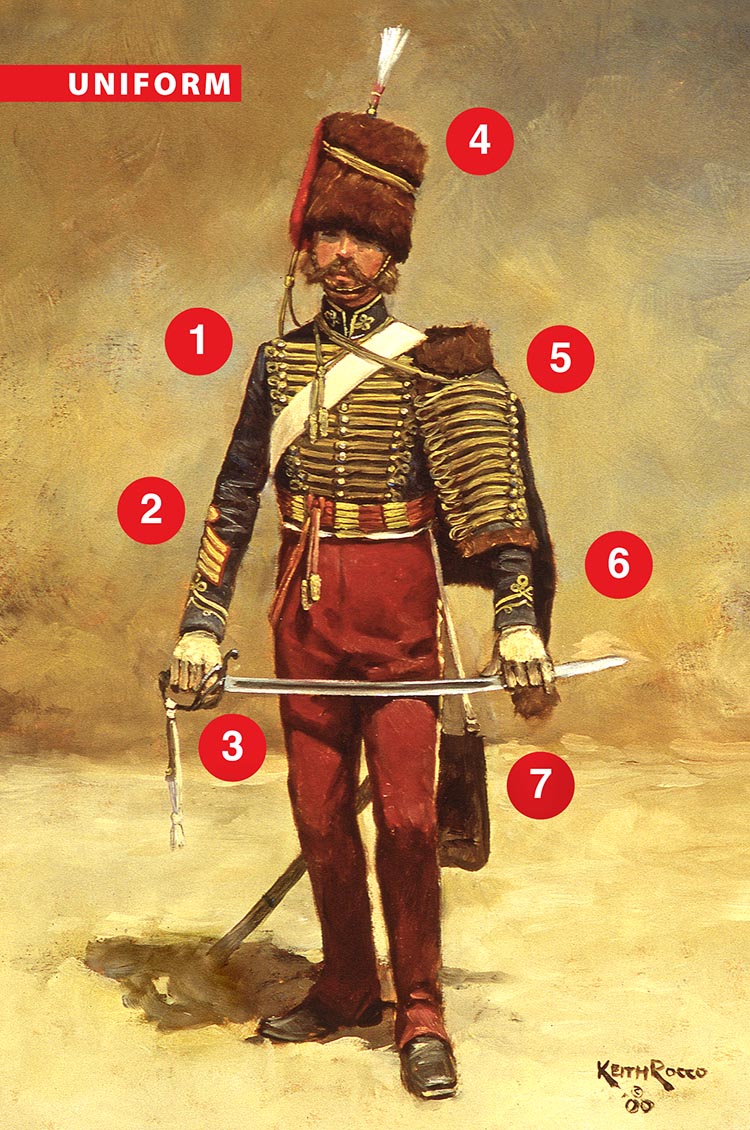
1. Hussar Jacket: Dark blue wool, tailored for a snug fit, with a Prussian collar, and three sets of 16 gold buttons, with gold frogging. Gold lace is shown along the cuffs, and other edges of the jacket.
2. Hussar Sash: Rows of red worsted cord, with alternating gold barrels, plus long red cords with gold ends.
3. Sword: 1821 Pattern Light Cavalry Sword.
4. Headgear: He wears a tall Hussar’s Busby of dark fur, with a gold cord, white plume, red bag, and gold-trimmed chin strap.
5. Pelisse: Short, dark blue jacket with with fur collar, cuffs, and along the lower edge, plus gold buttons and frogging, and hung from the shoulder by a gold braided cord.
6. Trousers: Prince Albert granted the unit the honour of wearing crimson trousers, the color of his personal livery, with a double stripe of gold or yellow lace down the side.
7. Sabretache: Hanging from a belt under his tunic is an embroidered sabretache—a large flat, decorative pouch.
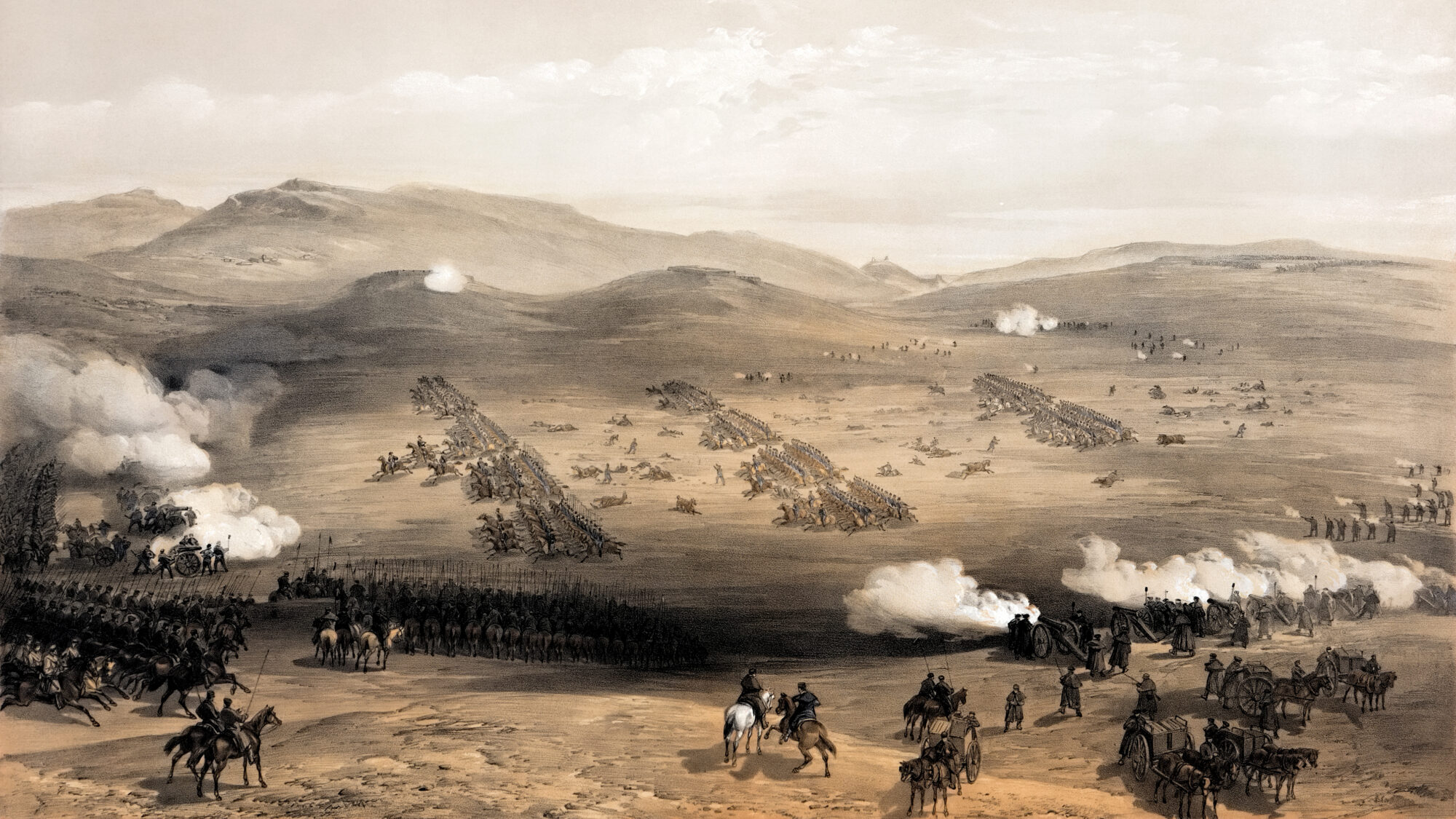
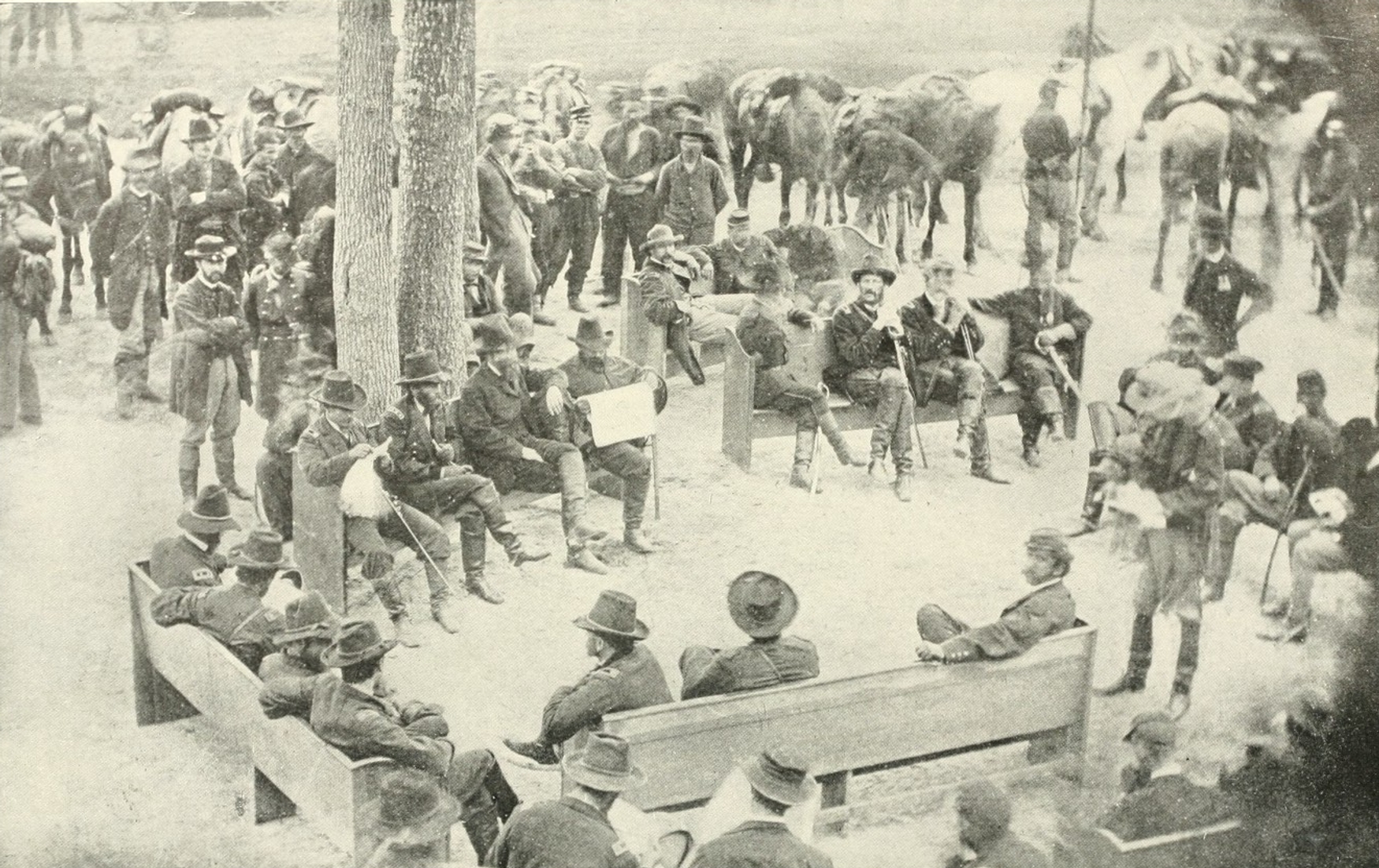
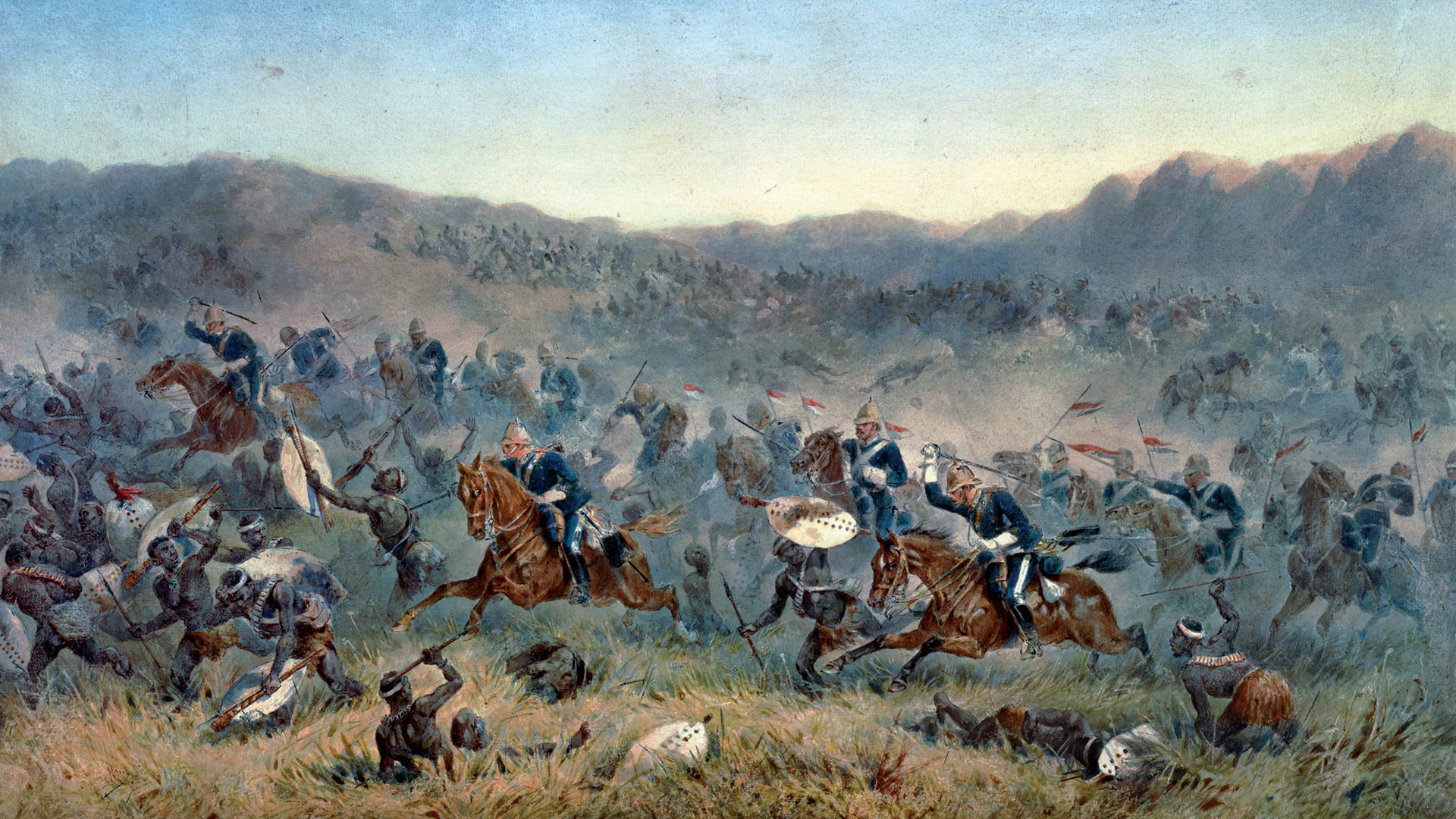
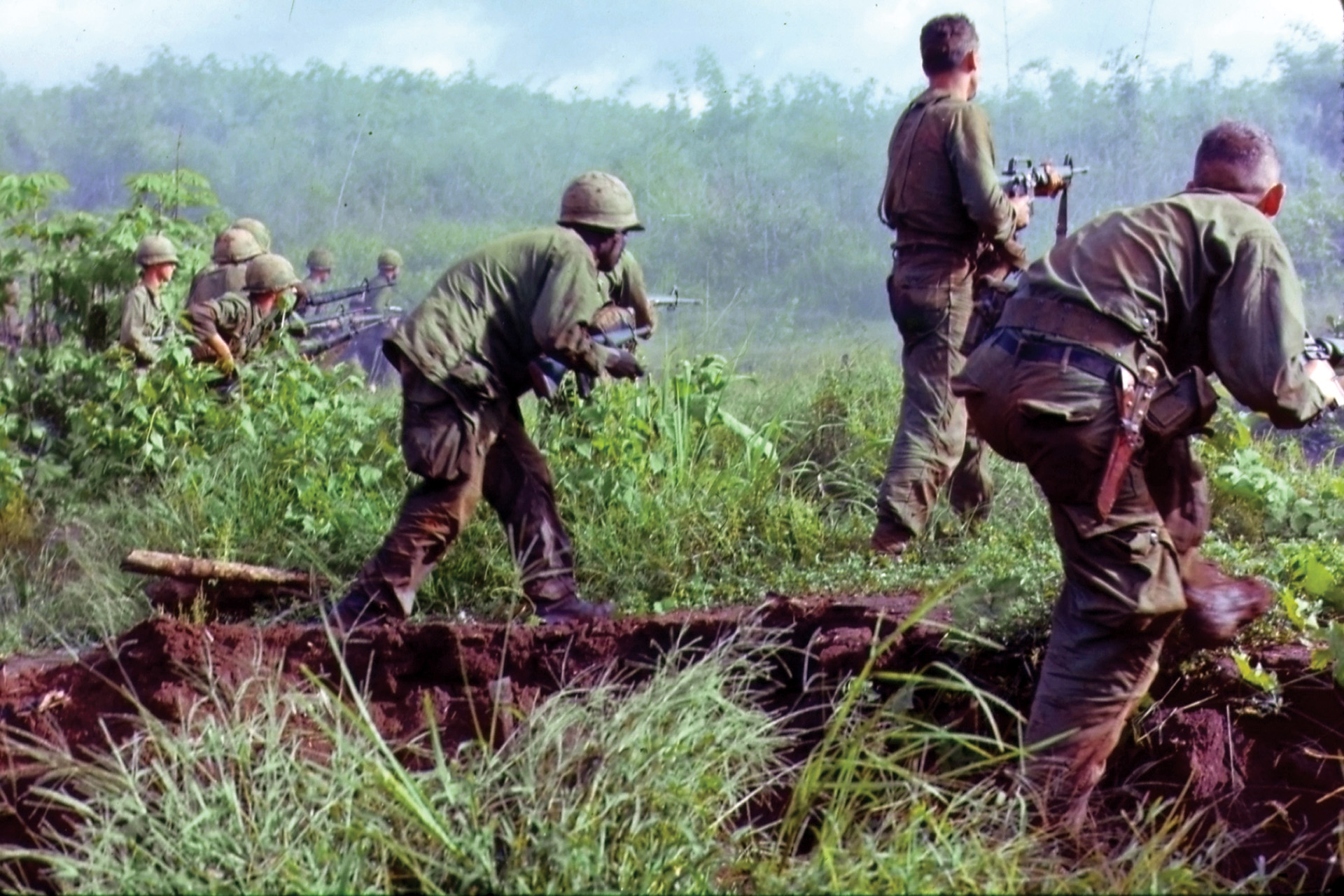
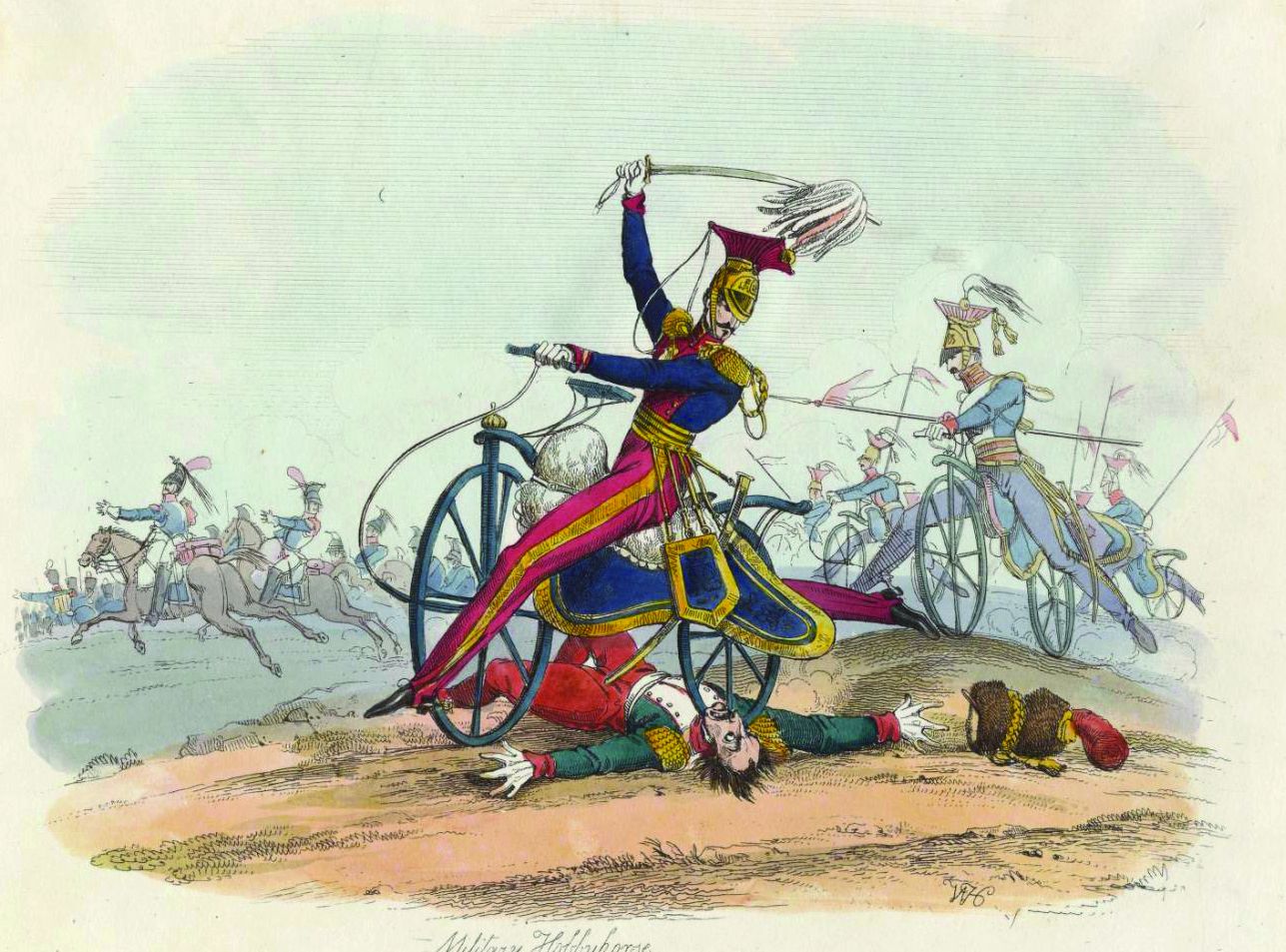
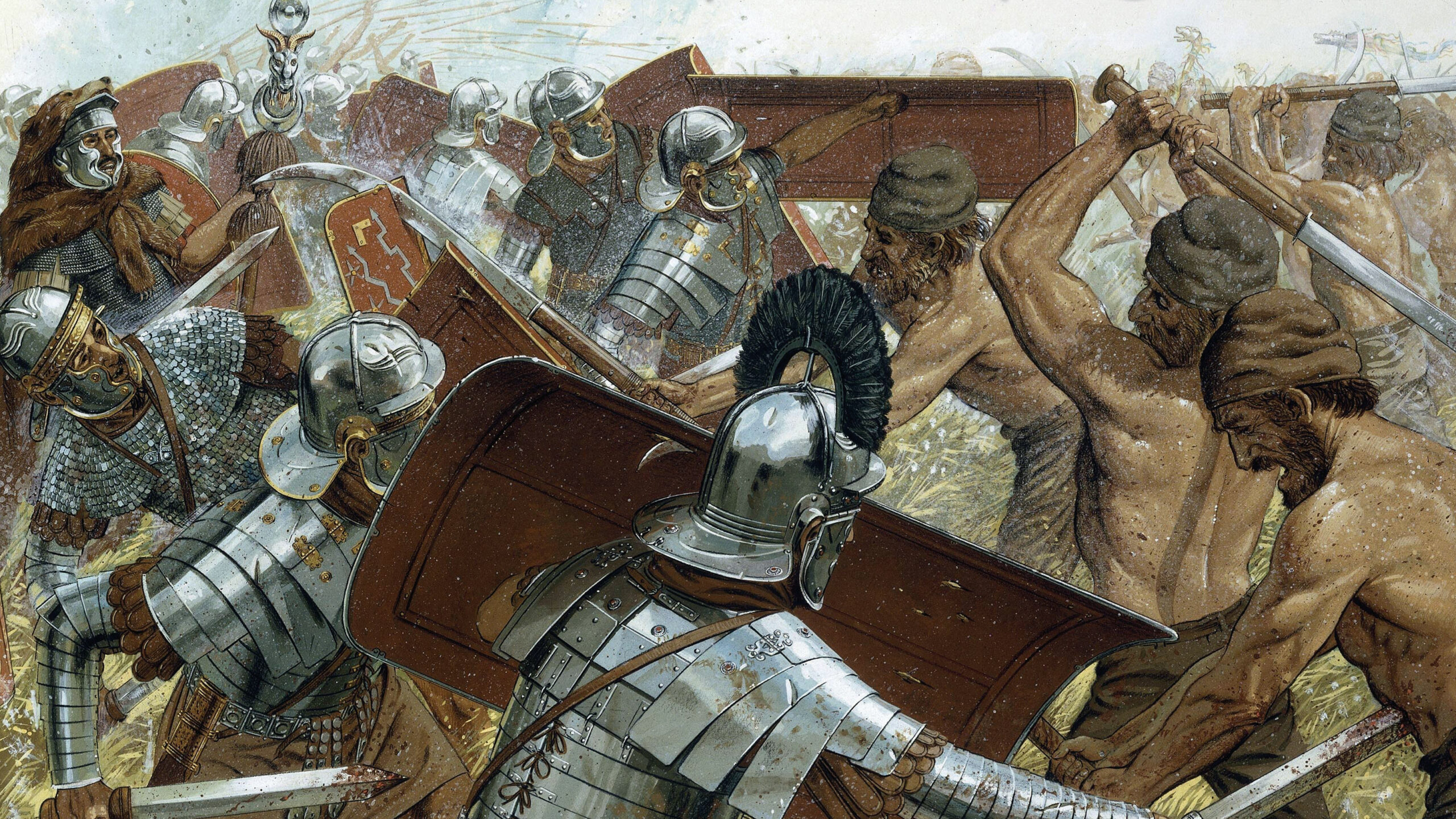

Join The Conversation
Comments
View All Comments